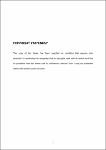A FRAMEWORK FOR SYNCRETIC PLURIVERSAL NARRATIVE: SOMAESTHETICS AND CONSCIOUSNESS IN THAI DESIGN EDUCATION
| dc.contributor.supervisor | Phillips, Mike | |
| dc.contributor.author | Maggio, Tommaso | |
| dc.contributor.other | School of Art, Design and Architecture | en_US |
| dc.date.accessioned | 2023-08-08T14:14:43Z | |
| dc.date.issued | 2023 | |
| dc.identifier | 10439827 | en_US |
| dc.identifier.uri | https://pearl.plymouth.ac.uk/handle/10026.1/21187 | |
| dc.description.abstract |
The investigation began by examining the diverse conceptions of creativity in the Western and Eastern hemispheres, specifically focusing on ‘Ex nihilo’ and ‘In situ’ (Ames) and how it is applied to creative education. The studies delved into the early modern art and design schools in Western countries, such as the German Bauhaus Art School (1919-33) and the Russian Vkhutemas Institute (1920-30), to gain a comprehensive understanding of how these experimental educational institutions influenced and continue to influence the contemporary global design education agenda. The thesis poses questions about how these approaches have been adapted within significantly different cultural contexts. The research explores emotions as cultural artefacts (Clifford) and the significance of soma (Hannah), by means of a dialogue with the concept of the social body as a living organism (Aulino). These elements, intertwined with the concept of somaesthetics (Shusterman), propose a soma-design approach that positions cultural identity as the central aspect of a (future) professional designer’s mindset. This approach signifies a shift beyond the established episteme and techne of silobased design education, towards a syncretic understanding of the profound impact of the self as an active participant in the local-global community. These studies have been underpinned by practice-based initiatives carried out in the region, in my role as a creative practitioner and educator. The thesis advocates for syncretic frameworks as a new domain for pluriversal narratives (Escobar) within the realm of Thai design education. The practice-based research revolved around several prototypes, including Emotional Space (ES), Sense-Perception and Self Motion (SPSM), and designerly activities such as YONOK, and The Dharma Vision. Scholarly activities were conducted in the design departments of Chulalongkorn University and Assumption University of Thailand, involving the analysis of and reflection on students’ responses. Designerly activities encompass collected experiences that increase awareness of local narratives and taboos. These case studies are initiated and developed to foster participatory and culturally-driven dialogues, facilitated through multiple local voices, to enhance context consciousness. Iterations serve to challenge the limitations of this critical approach, both within and beyond the academic context, while fostering the ability to generate pluriversal conversations. | en_US |
| dc.language.iso | en | |
| dc.publisher | University of Plymouth | |
| dc.subject.classification | PhD | en_US |
| dc.title | A FRAMEWORK FOR SYNCRETIC PLURIVERSAL NARRATIVE: SOMAESTHETICS AND CONSCIOUSNESS IN THAI DESIGN EDUCATION | en_US |
| dc.type | Thesis | |
| plymouth.version | publishable | en_US |
| dc.identifier.doi | http://dx.doi.org/10.24382/5082 | |
| dc.identifier.doi | http://dx.doi.org/10.24382/5082 | |
| dc.rights.embargodate | 2024-02-08T14:14:43Z | |
| dc.rights.embargoperiod | 6 months | en_US |
| dc.type.qualification | Doctorate | en_US |
| rioxxterms.version | NA |
Files in this item
This item appears in the following Collection(s)
-
01 Research Theses Main Collection
Research Theses Main


